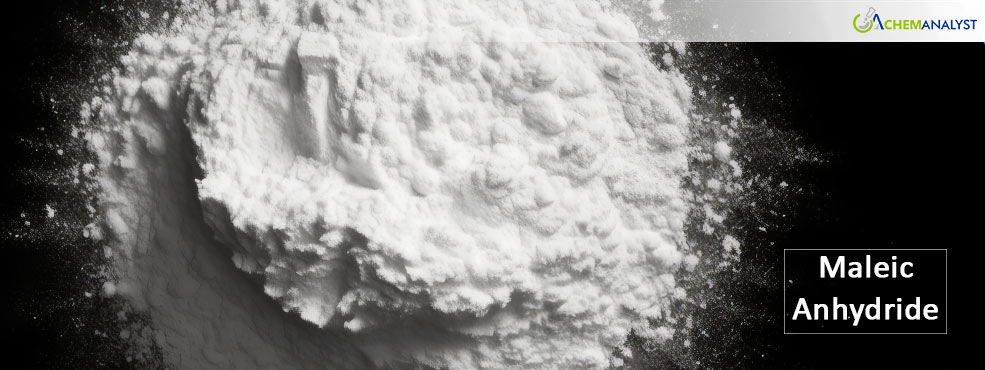European Maleic Anhydride Market Holds Steady Entering February 2025, Complex Outlook Anticipated
- 12-Feb-2025 2:00 PM
- Journalist: Sasha Fernandes
Maleic Anhydride prices across Europe remained stable during early February with no major fluctuations in the market. Adequate supply, steady downstream demand, and balanced inventories among producers contributed to price stability. Despite ongoing macroeconomic challenges, the European Maleic Anhydride market demonstrated resilience, maintaining consistent trading activity without significant disruptions.
Domestic Maleic Anhydride production remained steady across key manufacturing regions, ensuring sufficient availability to meet current demand levels. However, persistent port congestion in Europe continued to disrupt logistics, delaying the movement of crucial raw materials like butane. While butane prices showed some fluctuations, producers effectively managed procurement and inventory strategies to mitigate cost pressures and maintain stable production output.
The demand for Maleic Anhydride in Europe remained relatively subdued, with downstream sectors like Unsaturated Polyester Resins (UPRs) exhibiting limited growth. The broader economic environment continued to constrain industrial activity, restricting any major expansion in Maleic Anhydride consumption. With UPR-based product prices set to rise, cost-conscious buyers closely monitored procurement strategies to navigate potential cost implications.
The European UPR sector is undergoing a transition towards sustainability, as seen in the introduction of mechanically recycled DURAFIDE? rG-PPS. This shift aligns with the EU’s focus on increasing recycled content in engineering plastics, potentially influencing future Maleic Anhydride demand. Given its role as a compatibilizer in polymer adhesion, Maleic Anhydride consumption trends may shift depending on sustainability-driven manufacturing practices.
The competitive landscape in the European Maleic Anhydride market helped maintain price stability, as multiple suppliers ensured balanced supply dynamics. Despite economic headwinds, sufficient inventory levels prevented any sudden price spikes. While European producers continue to face complex supply chain challenges, growing reliance on Asian imports is expected to shape future market trends, particularly in the first half of 2025.
The challenging macroeconomic climate remains a significant factor affecting Maleic Anhydride demand, with industrial output still under pressure. While the Eurozone Manufacturing activity showed signs of improvement, activity remained in contraction territory. Market participants remained cautious, as global trade uncertainties, raw material costs, and logistical hurdles continued to influence procurement decisions within the Maleic Anhydride and broader chemical industries.
Looking ahead, the European Maleic Anhydride market is expected to experience a complex interplay of demand fluctuations and supply chain adjustments. With UPR-based product price hikes coming into effect, potential cost pass-throughs could impact Maleic Anhydride purchasing patterns. Supply constraints stemming from port congestion and fluctuating butane costs will continue to be one of the key market factors, shaping pricing trends in the months ahead.



